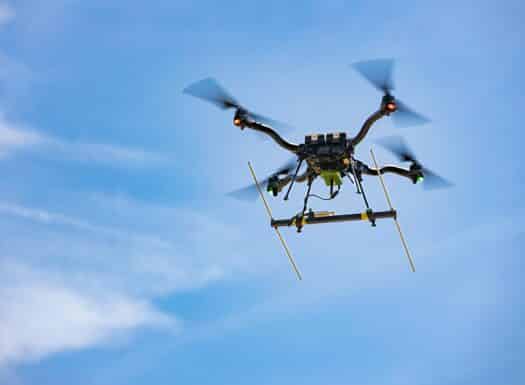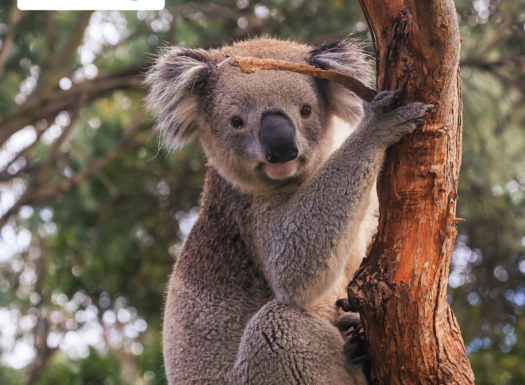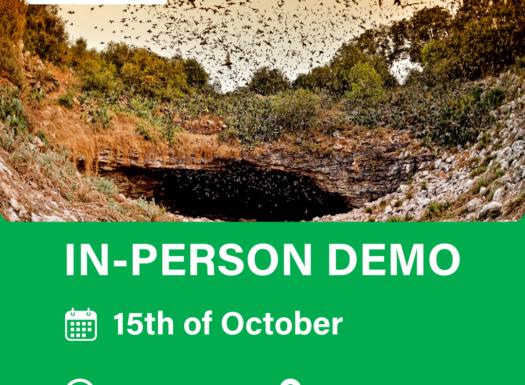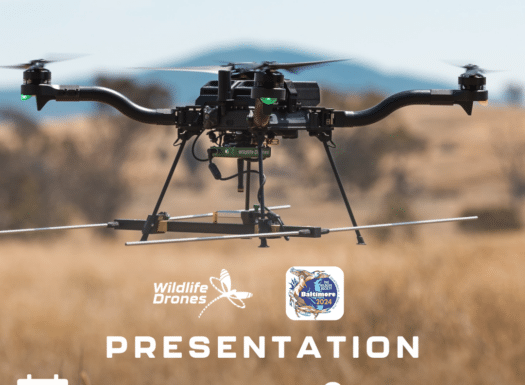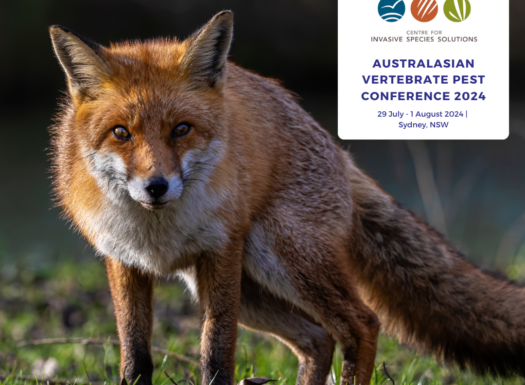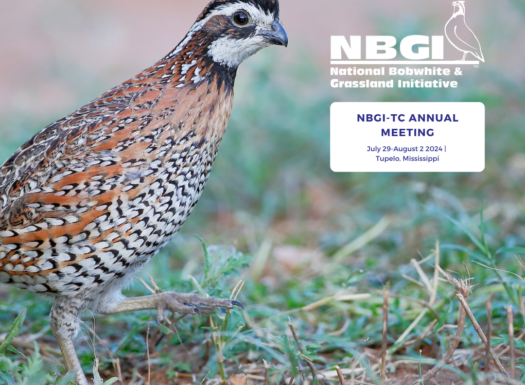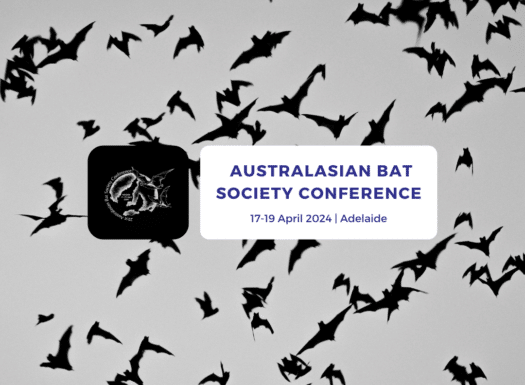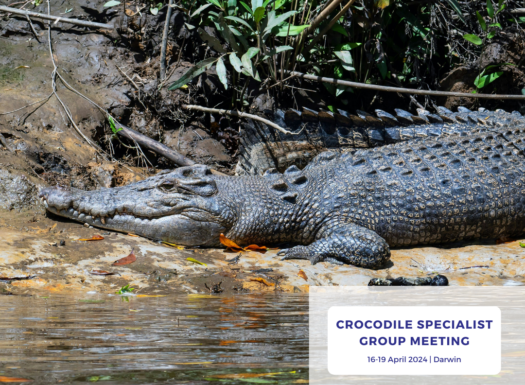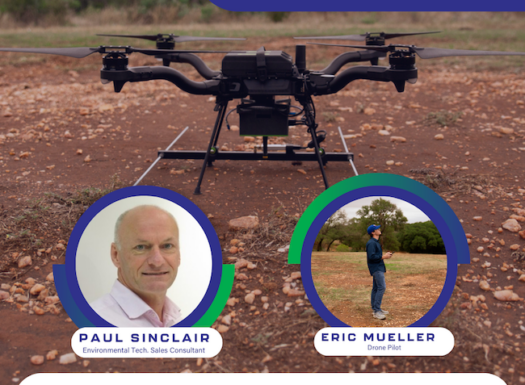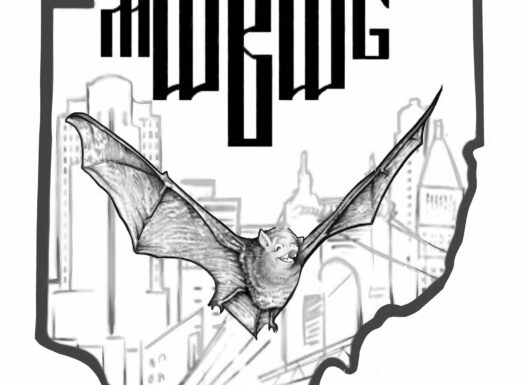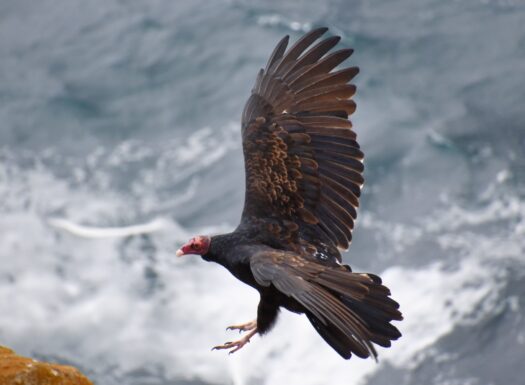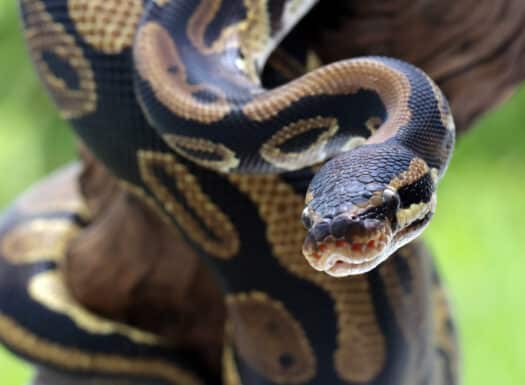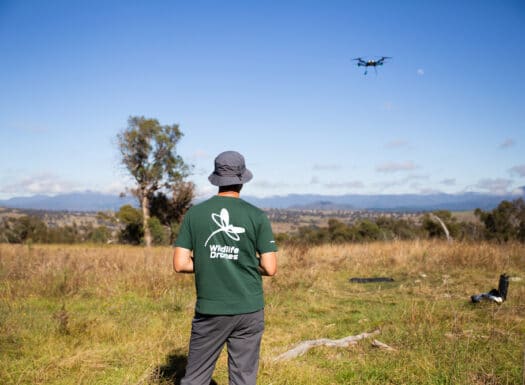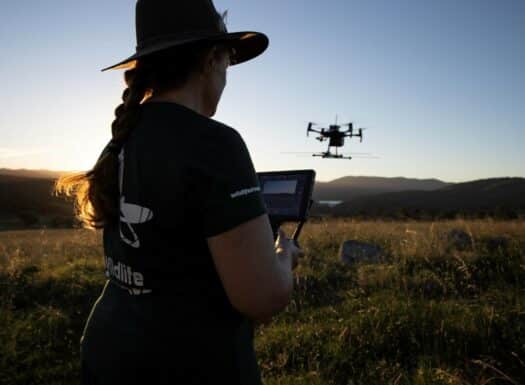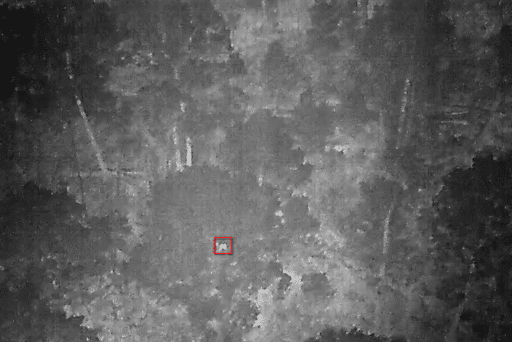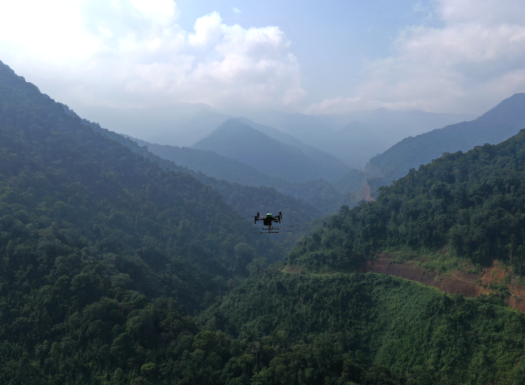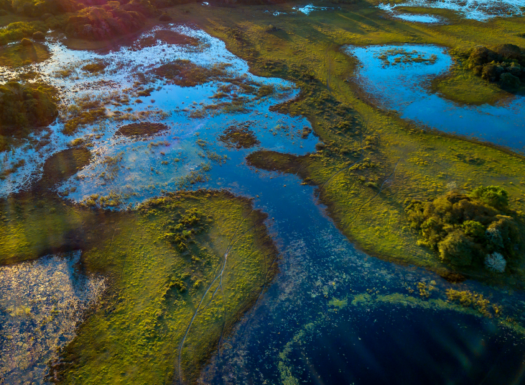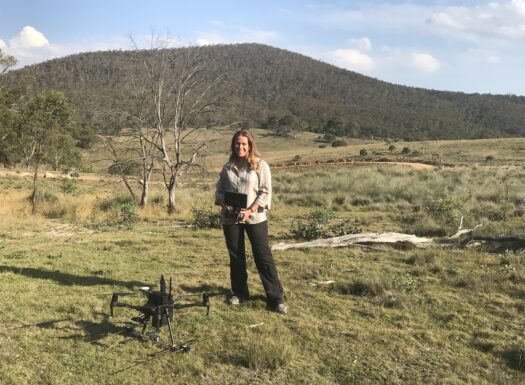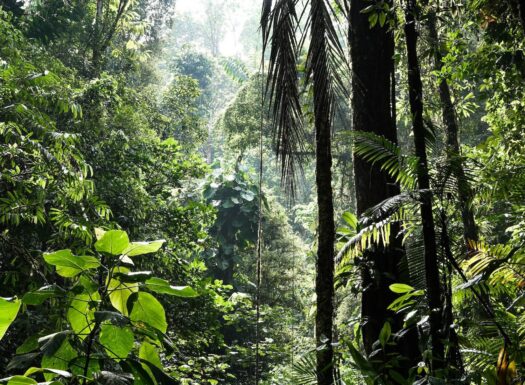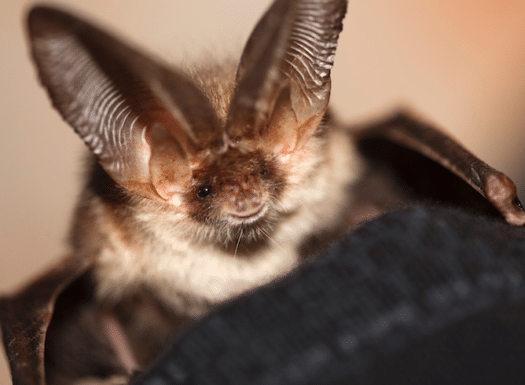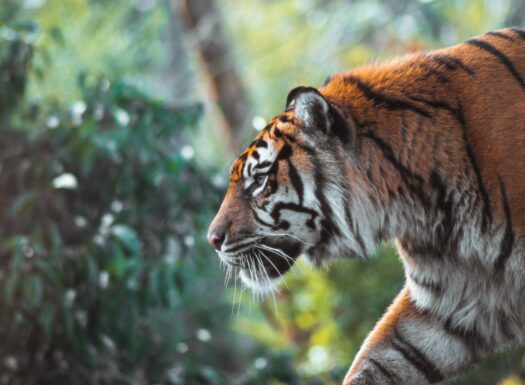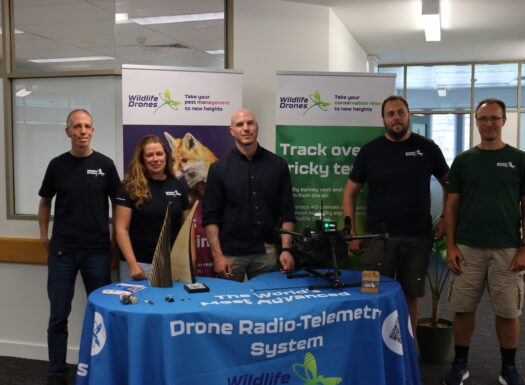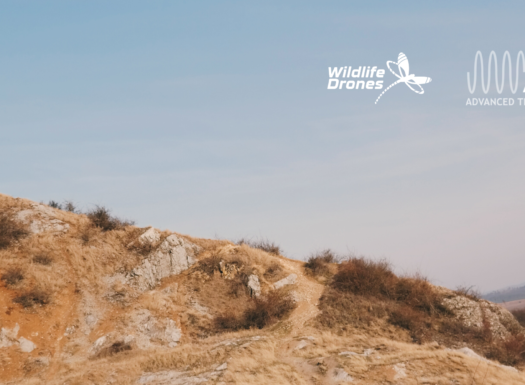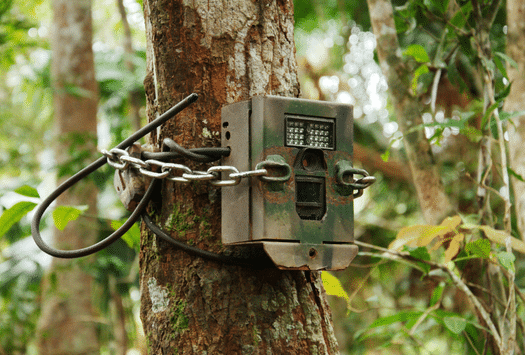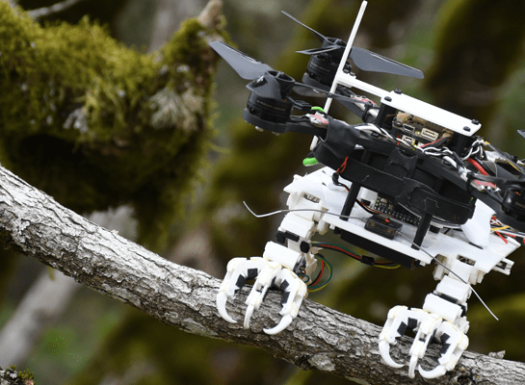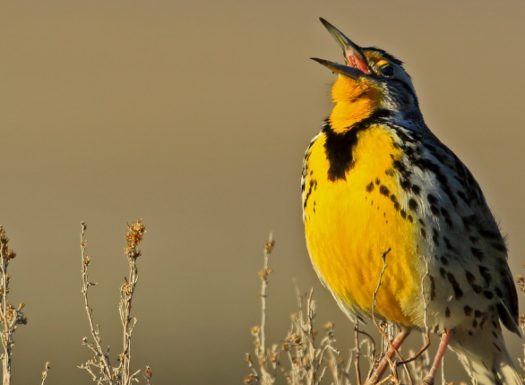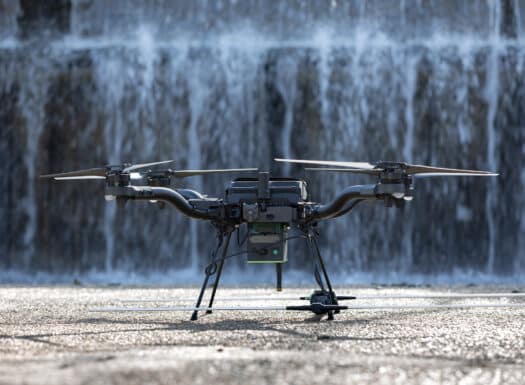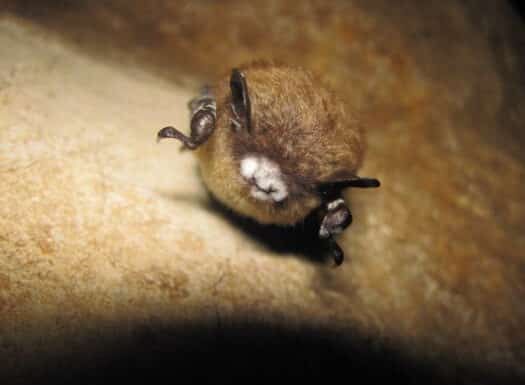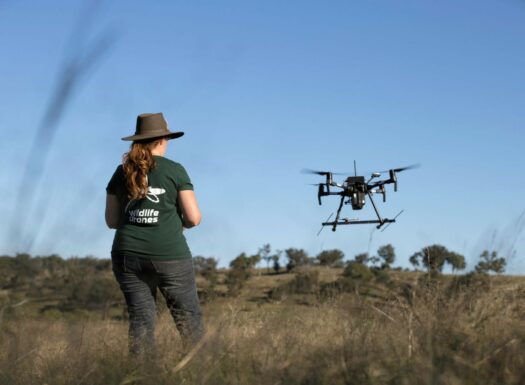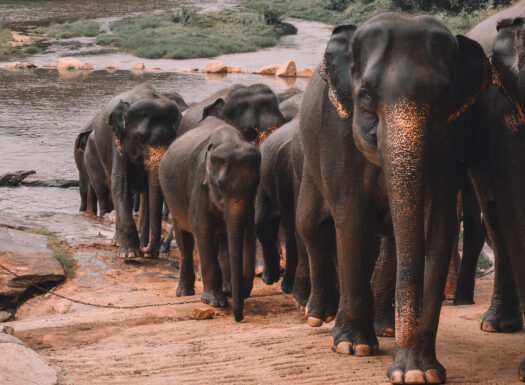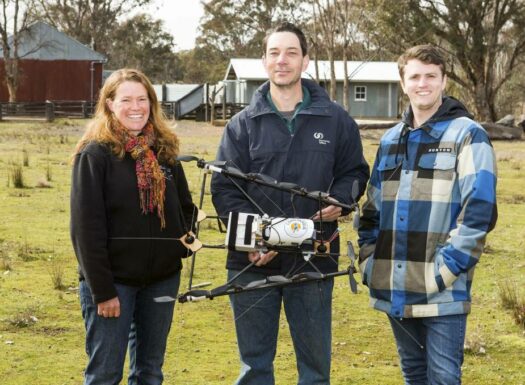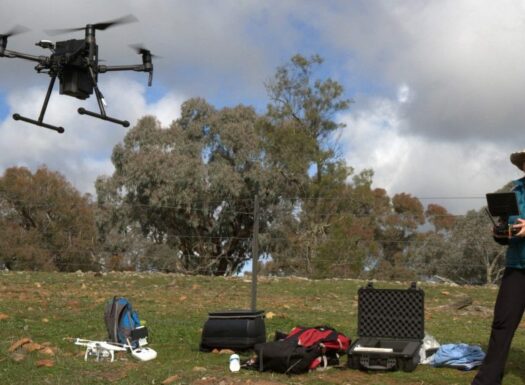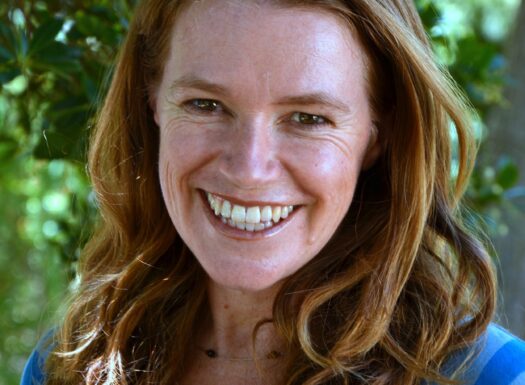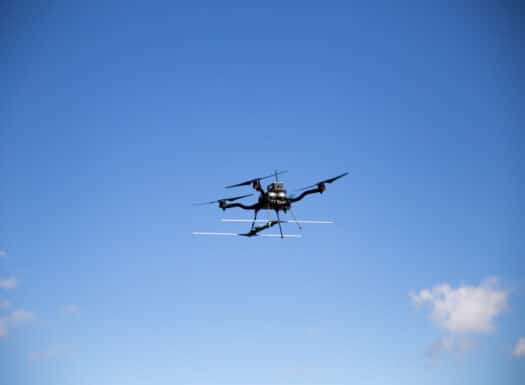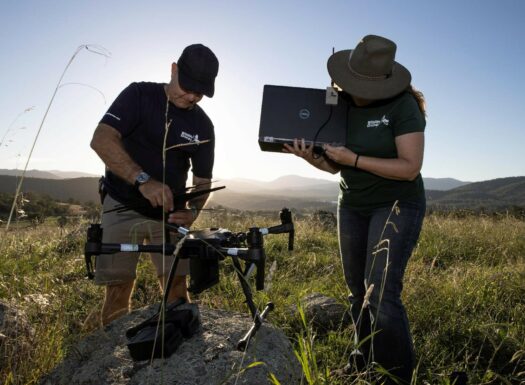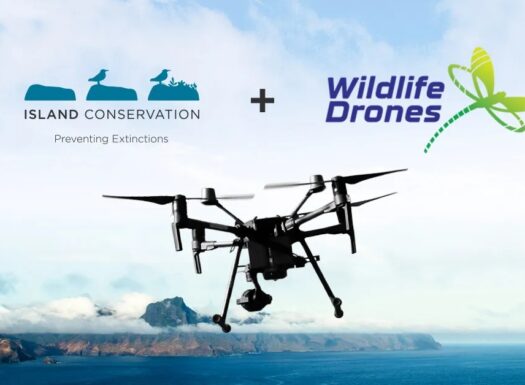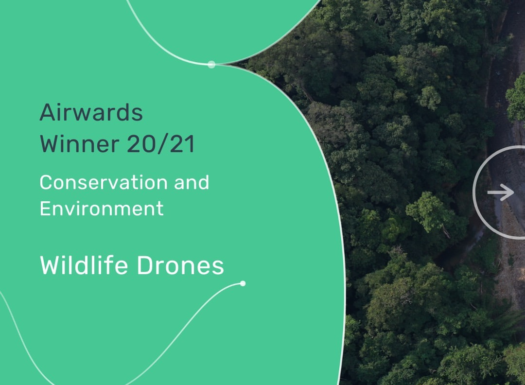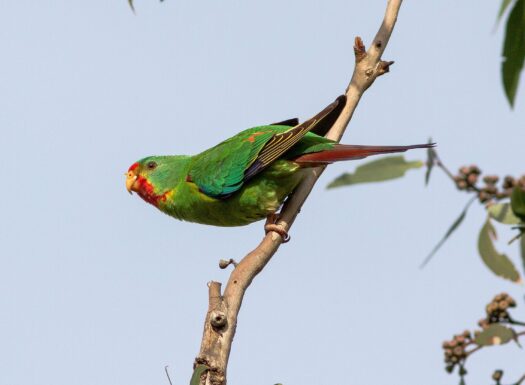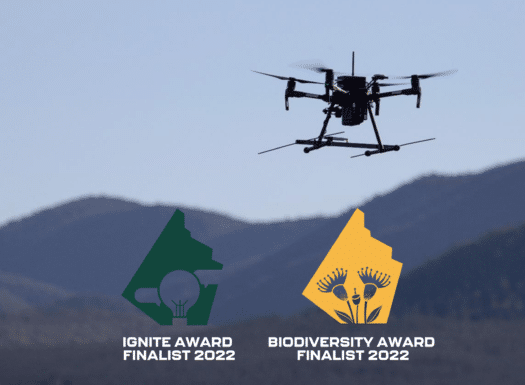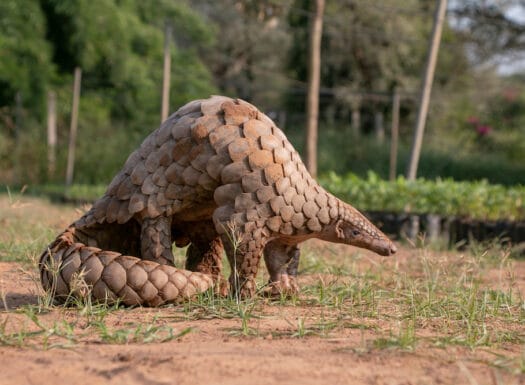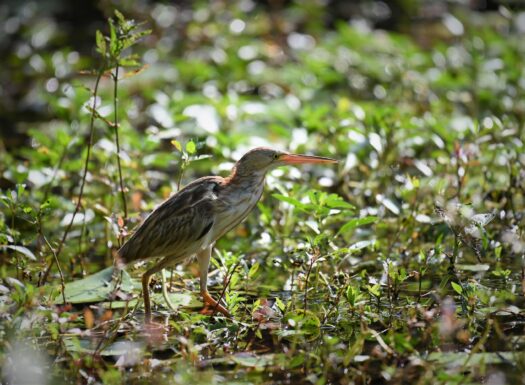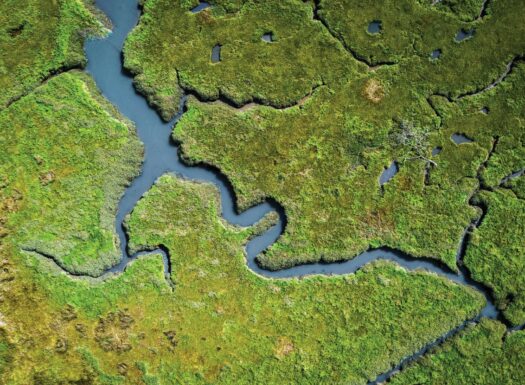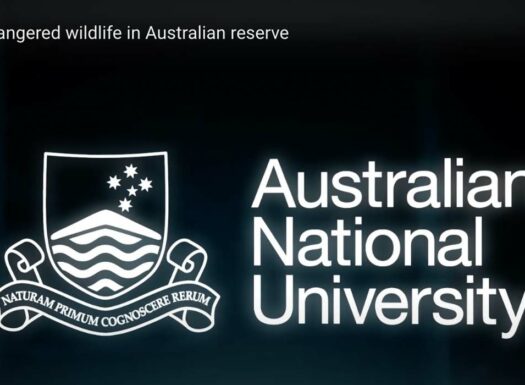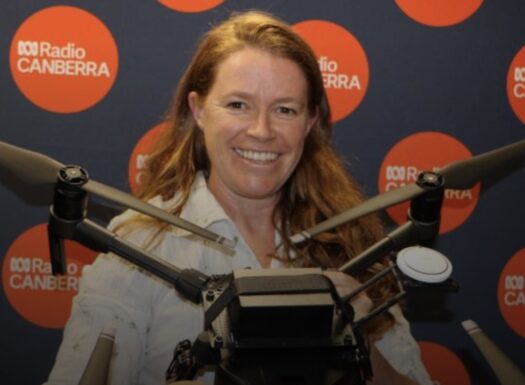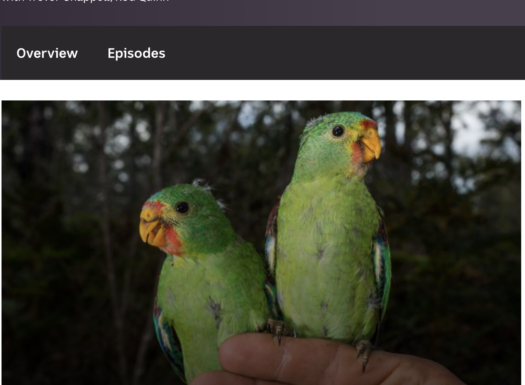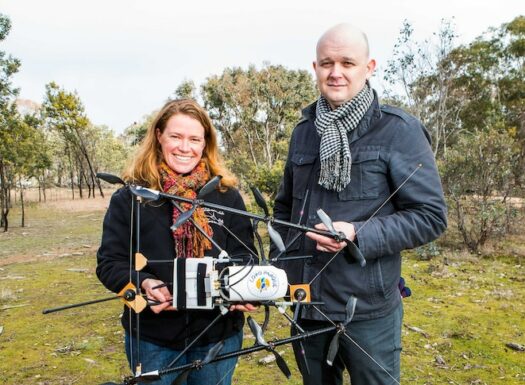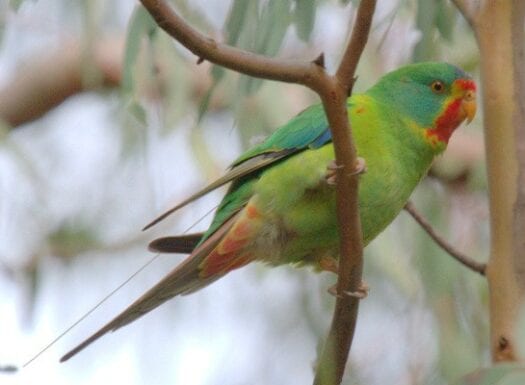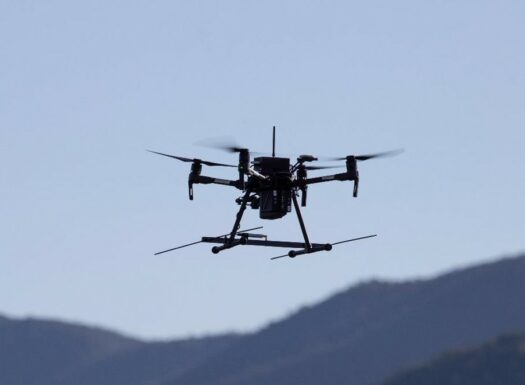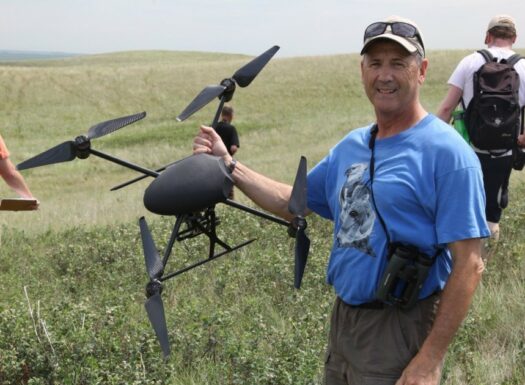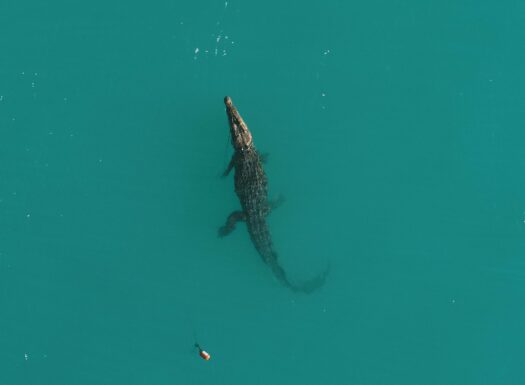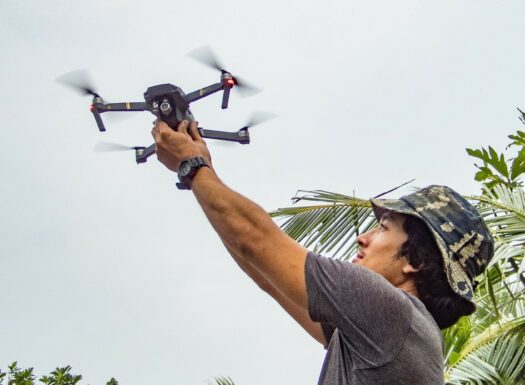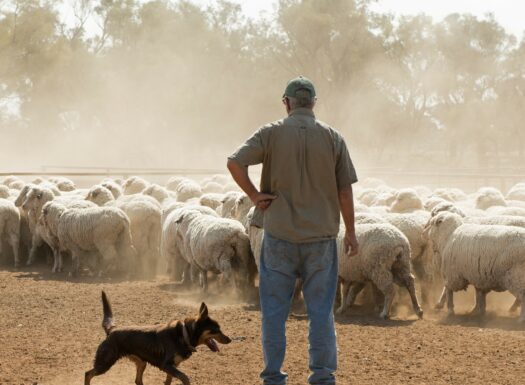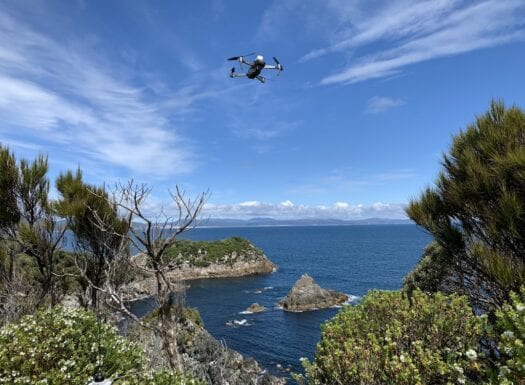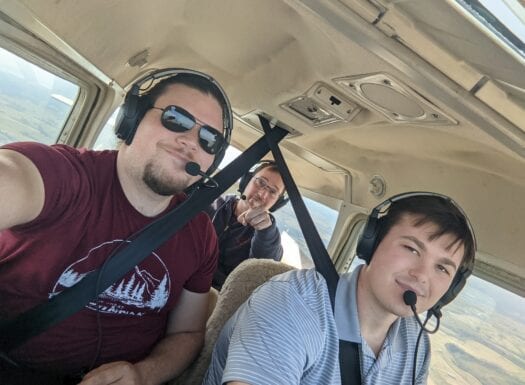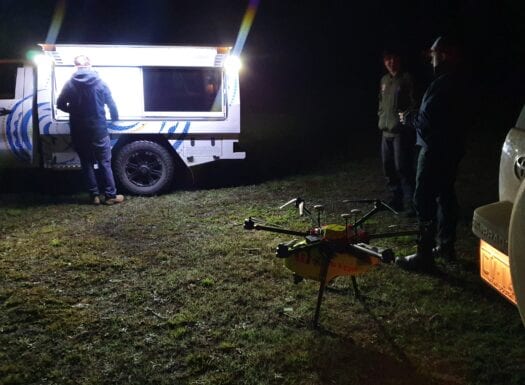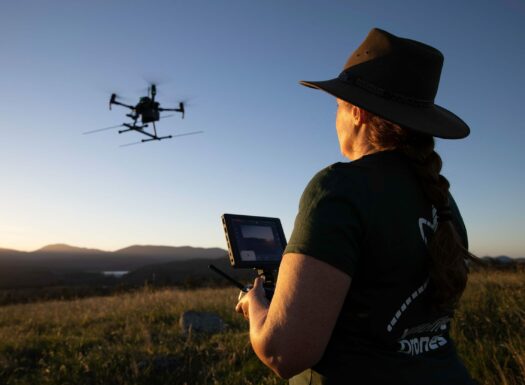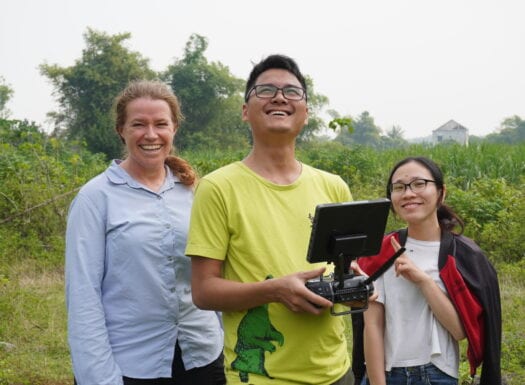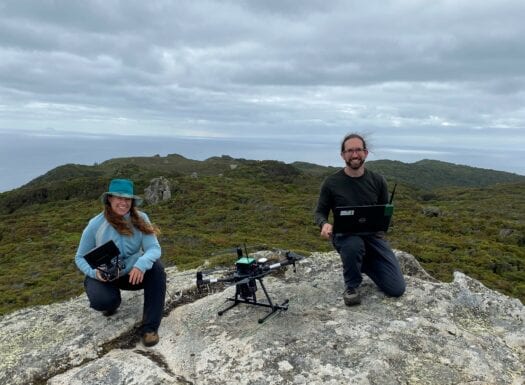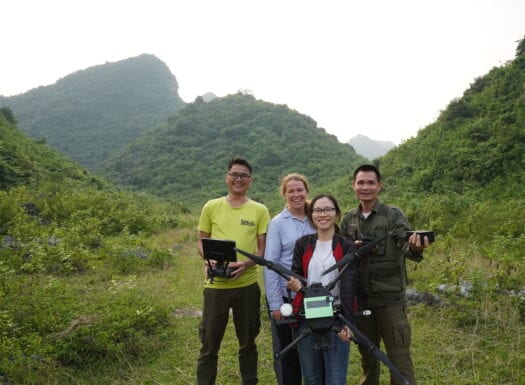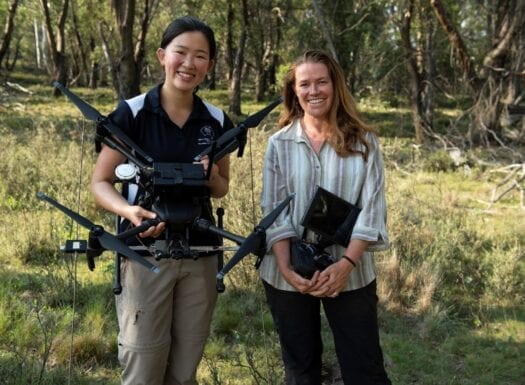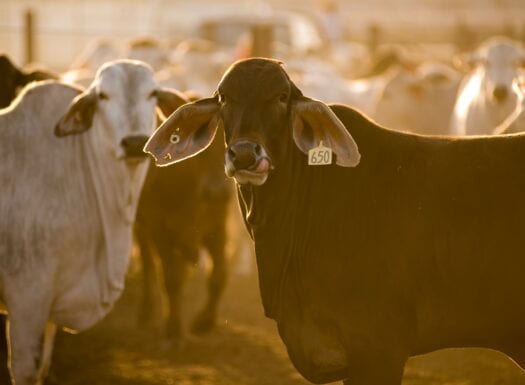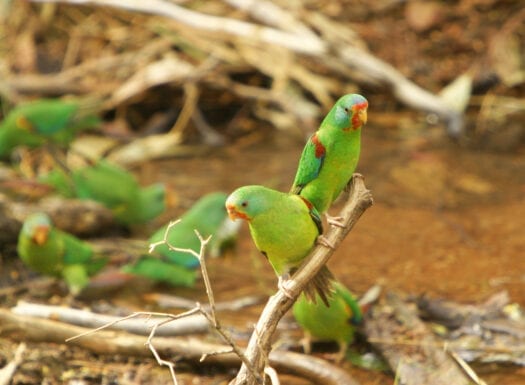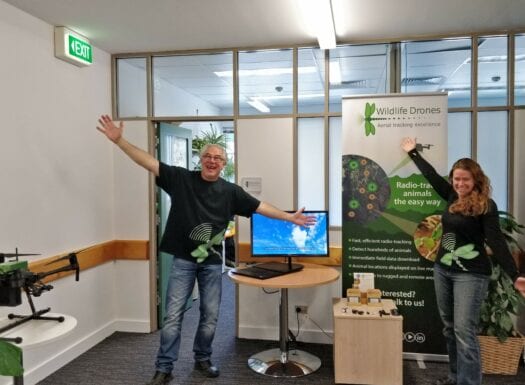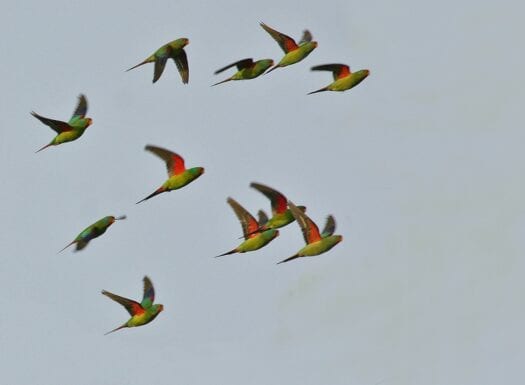Radio-Tracking Birds
Birds play a major role in ecosystems, from pollinating plants and spreading seeds to controlling pest populations. They act as engineers who restore and maintain balance in the environments they inhabit. Ensuring we support the livelihood of bird populations and conserve their habitats is integral to preserving biodiversity, sustaining ecosystems, and even supporting our agriculture
5 Things You Can Do With Wildlife Drones
Wildlife Drones offers an innovative wildlife tracking solutions, including drone-based radio telemetry technology. Our cutting-edge technology excels manual tracking methods in several ways, including improved accuracy, greater accessibility, and enhanced efficiency. If you’re a wildlife conservationist or biologist seeking to streamline your research, our revolutionary drone radio tracking technology is a far better alternative to
Intern Interview Keyu Deng
Can you briefly introduce yourself and share a bit about your background? My Name is Keyu Deng, I’m currently a UI/UX design intern at Wildlife Drones, originally from Shenzhen, China, and I’ve been living in Australia for five years. I have a background in urban planning and architectural surveying using drones, which is how I
Ecological Society of Australia 2024
Wildlife Drones will be presenting at the ESA Conference 2024 in Melbourne. The conference of the Ecological Society of Australia (ESA 2024) will be held at the Melbourne Convention and Exhibition Centre (MCEC) from 9-13 December 2024. ESA 2024 will be an in-person conference but a limited number of online options will be offered, including
Demonstration Bat Conservation International 2024
Wildlife Drones will be conducting a live demonstration of the world-leading Dragonfly VHF tracking technology solution. Wildlife Drones and Bat Conservation International The use of innovative drone radio-telemetry technology for providing insights on bat roosting and foraging behavior across a diversity of landscapes Wildlife Drones’ Dragonfly radio-telemetry tracking solution is the world’s leader in that
The Wildlife Society’s Annual Conference 2024
THE WILDLIFE SOCIETY’S 31ST ANNUAL CONFERENCE 2024 | Baltimore, Maryland The Wildlife Society’s Annual Conference is one of the largest gatherings of wildlife professionals and supporters in North America. For over 30 years, TWS has hosted this unique and informative event that spotlights the latest advancements in wildlife management and research while providing abundant opportunities
Australasian Vertebrate Pest Conference 2024
The 19th Australasian Vertebrate Pest Conference (AVPC) is heading to Sydney, NSW on 29 July – 1 August 2024. Hosted by the Centre for Invasive Species Solutions in partnership with the NSW Department of Primary Industries, NSW Local Land Services and NSW National Parks and Wildlife Service, the 19th AVPC will be held at the Aerial UTS Function Centre,
NBGI Conference 2024
2024 National Bobwhite and Grassland Initiative Technical Committee Annual Meeting The Mississippi Department of Wildlife, Fisheries, and Parks, partners and sponsors are pleased to host the annual meeting of the NBGI Technical Committee and invite you to attend. The meeting will be held at the Cadence Bank Conference Center, 375 East Main Street, Tupelo, MS
21st Australasian Bat Society Conference
The Australasian Bat Society, Inc. is proud to announce that its 21st biennial Conference and AGM will be held at at the University of Adelaide, North Terrace campus, North Terrace, Adelaide, from 17 to 19 April 2024. ABOUT THE CONFERENCE The conference will include an exciting program of talks and posters on a wide range
Crocodile Specialist Group Conference 2024
The Crocodile Specialist Group will be holding its 27th CSG Working Meeting, in Darwin, Australia. Drone and Veterinary workshops on 14 April, and Steering Committee meeting on 15 April The conference will feature a diverse range of sessions, including keynote speakers, workshops, panel discussions, and poster presentations with a focus on the latest trends and
2024 MIDWEST BAT WORKING GROUP
Event Details: When: Wednesday April 3rd, 2024 to Thursday April 4th, 2024 Where: Hilton Cincinnati Netherlands Plaza, Cincinnati, OH Demo: Our demo session is at maximum capacity, and attendance is no longer available. However, if you’re interested in witnessing our technology in action, please fill out this form to express your interest and receive updates
Tracking animal survival
Monitoring animals that have been released back into the wild is critical to the success of wildlife conservation programs. Below we cover some animal survival tracking basics—including how drones can help to enhance survival data collection. Why are animals released into the wild? Generally speaking, three kinds of animals get released into the wild: Animals
Radio-tracking Reptiles
Whether it’s the invasive Burmese python, or deadly Australian brown snake, reptiles are notoriously difficult to monitor. Their cryptic nature makes them hard to spot, and they often inhabit challenging terrain, like dense tropical jungle, or swampy marshland, which makes them hard to follow with traditional VHF radio telemetry techniques. As a result, it’s estimated
Drone Pilot Phil Keaton
Meet Phil who is one of the skilled drone pilots at Wildlife Drones. He plays a crucial role in product development by flying and testing improvements to our cutting-edge hardware and software and provides valuable feedback to guide the development team. Every week he’ll head out to our testing site and use his flying expertise
Four tools for bat conservation research
Of the 1,400 bat species alive today, approximately 15 per cent are considered threatened by the IUCN. Alongside habitat destruction and hunting, the spread of wildlife diseases like white-nose syndrome (WNS) is a leading cause of bat population decline. WNS is particularly problematic in the United States and Canada where it has devastated native bat
Radio telemetry in a time of changing technology
Today, wildlife professionals around the world have access to more animal tracking methods than ever before. Across the board, tags are getting smaller and more powerful, making it possible to track a wider range of animals with a higher degree of accuracy. As global pioneers of drone radio telemetry, Wildlife Drones has spent the better
Wildlife Drones’ Thermal Survey Locates Koalas for GHD
Innovative drone technology advances Koala impact assessment and conservation efforts across Australia. Wildlife Drones, an Australian drone sensor technology company, conducts thermal imaging surveys to detect koalas and greater gliders across eastern Australia to increase the efficiency and accuracy of impact assessments and conservation research. This includes koala surveys in partnership with GHD on major
Challenges of tracking highly mobile species
Small, agile and capable of travelling vast distances, mobile species like birds and bats are notoriously difficult to monitor. As well as moving quickly through the landscape, their small size often means they can only be tracked with tiny Very High Frequency (VHF) radio tags. In this article, we discuss the challenges of tracking highly
Drone Pilot Dr Debbie Saunders
In the second part of our interview with Dr Debbie Saunders, CEO, founder, and Chief Remote Pilot at Wildlife Drones, we delve deeper into her journey as a drone pilot and the remarkable impact her work has had on wildlife tracking and conservation. Join us as we explore Dr Saunders’ experiences, insights, and the incredible
Biodiversity offsets
The 2021 UN Biodiversity Conference (COP15) marked the beginning of the process of developing the Post-2020 Global Biodiversity Framework. This Framework sets out an approach to guide actions worldwide to preserve and protect nature through to 2030. However, successfully implementing this framework requires a significant increase in the amount of biodiversity finance available globally. In
Drone Pilot Stories Debbie Saunders
For over 20 years, Dr Debbie Saunders has worked as an ecologist and studied the movements of small migratory birds. Frustrated by the limitations of radio-tracking manually, Dr Saunders was inspired to develop a practical solution with wide-ranging applicability. Wildlife Drones is now an award-winning start-up that is currently working with a range of people
Investing in Biodiversity Conservation
The urgent need for greater investment in biodiversity conservation Australia’s State of the Environment Report paints a bleak picture of a national environment under extreme pressure. Despite the clear need to take action to prevent further environmental damage, the Report highlights critical shortfalls in the level of resources currently dedicated to environmental management. In this
Tools for bat research
At Wildlife Drones, we’ve been lucky enough to work with Copperhead Environmental Consulting to help track federally endangered Indiana bats. In this article we’re sharing some of the things we learnt about the five most common tools that help scientists undertake bat conservation research—including drones. 1. Mist nets Mist nets are sheets of fine nylon
Tiger Monitoring with Drones 2023
Sariska Tiger Reserve is in a semi-arid region that spans over 1200 square kilometres and boasts a diverse range of flora and fauna, including top predators like tigers and leopards. However, the reserve is under threat from anthropological pressure and a drastic increase in the cattle population. The local villagers, who traditionally depended on the
UN Sustainable Development Goals
Adopted by all United Nations (UN) member nations in 2015, the 2030 Agenda for Sustainable Development outlines a path towards peace and prosperity for people and the planet. At the heart of this plan are 17 Sustainable Development Goals (SDGs), which represent a call to action for all countries to end poverty and reduce inequality,
Independent Senator David Pocock visits Wildlife Drones
Independent Senator David Pocock visited the deep tech startup Wildlife Drones in Canberra to see the world’s most advanced drone radio-telemetry technology first-hand. Wildlife Drones was pleased to host Independent Senator David Pocock in their Canberra office and showcase their cutting-edge technology which is used to track both invasive and threatened species globally. There were
Groundbreaking tech partnership ATS & Wildlife Drones
Most groundbreaking tech partnership for wildlife conservation in 2023: ATS & Wildlife Drones combine their technological expertise to better monitor and protect wildlife Wildlife Drones, a tech startup company based in Australia, has joined forces with Advanced Telemetry Solutions based in Isanti, MN, one of the world’s leading radio-tag manufacturers. Together they will integrate and
5 uses of camera traps
Invented more than a century ago, camera traps are one of the most commonly used wildlife monitoring tools in the biodiversity conservation toolkit. Capable of recording accurate data with minimal disturbance, camera traps are used by scientists worldwide. Here are five common applications of camera traps for conservation. 1. Endangered species monitoring Camera traps are
3 bio-inspired drones
As payload technology continues to evolve, more and more researchers are turning to drones to undertake wildlife monitoring. RGB cameras and thermal imaging are making aerial mapping easier than ever before; Wildlife Drones’ unique radio-telemetry system is helping clients to monitor animal behaviour more quickly and with less effort; and new aerial seeding technology is
Grasslands, the home of ground-dwelling birds
Teeming with wildflowers and native animals, grasslands—or prairies—as they are commonly known in the American Midwest, stretch across vast swathes of the United States. From songbirds to raptors, grasslands are home to a staggering number of bird species—many of which are small and difficult to track. With Thanksgiving just around the corner, we thought we’d
Flying your drone in the mountains
5 things you need to know when flying your drone in the mountains Drones have transformed environmental research by making it easier than ever before to access challenging landscapes—including rugged mountain terrain. But flying in mountains at high altitudes can be more complex than flying your drone in open, flat cleared areas. Here are five
Drones for wildlife conservation
In recent years, drones have revolutionised the way scientists study wildlife. Drone cameras are more powerful, drone platforms are lighter and quieter, and new payloads have come online, making it easier than ever before to gain valuable insights into animal behaviour. Curious about how drones could help your conservation project? In this article, we discuss
Modern technology and Indigenous knowledge
Indigenous people have cared for countries around the world for tens of thousands of years. This ancient connection to the land has fostered a deep understanding of sustainable land management practices. Increasingly, environmental managers are recognising the importance of pairing Indigenous knowledge with scientific approaches to wildlife conservation. In this article, we take a look at
Wildlife disease and conservation
Anyone who’s ever seen a ‘zombie deer’ with chronic wasting disease, or a Tasmanian devil suffering from devil facial tumour, knows how devastating wildlife disease can be. In much the same way that invasive species and noxious weeds wreak havoc on native ecosystems, wildlife diseases pose a significant threat to biodiversity. In our previous article
10 things to know before your first drone flight
If you’ve recently become a drone pilot and you’re itching to get your new drone outside it can be tempting to rush out the door. After all, there’s nothing quite like taking your new drone on its first flight and seeing the world from a whole new perspective. But there are a few important things
Press Release – Freefly Systems Partnership
American drone manufacturer Freefly Systems and innovative sensor technology startup, Wildlife Drones, announce partnership American drone manufacturer Freefly Systems have announced a partnership with Australian conservation tech start-up Wildlife Drones to launch the world’s most advanced radio-telemetry system incorporating US made drones. Freefly Systems have over a decade of experience bringing innovative products to the
Preventing human-wildlife conflict
Each year, September 4 marks National Wildlife Day in the United States. It’s a chance to It’s a chance to raise awareness of endangered species across America, and reflect on what work is needed to encourage peaceful coexistence with wildlife. So in honour of #nationalwildlifeday, we’re taking a deep dive into human-wildlife conflict. We’ll explore
News Canberra Times
ANU’s radio-tracking drone can locate radio-tagged wildlife Although scientists may never remove all that is mysterious in our wildlife, researchers from the ANU have taken a chunk of the frustrating aspect of their work out of the equation. About eight years ago Dr Debra Saunders from the Fenner School of Environment and Society was trying
News Canberra Innovation Network Startup
World first drone wildlife tracking startup making global impact Canberra startup, Wildlife Drones has developed the world’s most innovative animal radio-tracking system using drones that track radio-tagged animals in a world first. Dr Debbie Saunders, a wildlife researcher at the Australian National University (ANU) and Co-Founder and Director of Wildlife Drones originally had the idea
News Canberra Innovation Network
Women in Innovation: Debbie Saunders Each Wednesday we interview women in our community about innovation and what drives them to make a difference in their industries everyday! “Innovation expands the realm of possibility and enables creative solutions to the world’s problems.” Read the full article here: http://cbrin.com.au/women-in-innovation/debbie-saunders/ If you are interested in becoming a drone
Australian News
Drone successfully detects radio-tagged wildlife Australian researchers have developed a drone to locate radio-tagged wildlife in inaccessible areas. A custom-built miniature receiver and antenna provide real-time information on radio-tracked wildlife, which are mapped live on a laptop. The unmanned aerial vehicle has successfully detected tiny radio transmitters weighing as little as one gram. The system
Australian Geographic
Drone used to track wildlife a world first Australian researchers have developed a drone that can radio-track wildlife, which will improve conservation efforts. Researchers from the Australian National University (ANU) have teamed up with colleagues from the University of Sydney to develop a drone system for locating radio-tagged wildlife. The drone, believed to be a world-first tracker
Drones and wildlife laws
At Wildlife Drones we know how important it is to respect local drone laws designed to protect native wildlife. But we’ve also learnt first-hand just how difficult it can be to keep up with changes in government drone regulations. That’s why we’ve pulled together this short article on the 3 things you need to know
Island conservation and protection
Galápagos tortoises, Komodo dragons, Darwin’s finches—these are just a few of the many animals that call islands home. According to the Institute of Zoology, islands support 15-20% of all mammal, bird, amphibian and plant species. In doing so, islands play an important role in preserving the unique genetic material of species that often aren’t found
5 things you need to pack for your field trip
Whether you’re a university student, conservation ecologist or marine biologist, field trips are often one of the most important and rewarding parts of a career in science. But apart from your research equipment, it can be difficult to know what to pack for your field trip—particularly if you’re just starting out. Your university or employer
Conservation partnership with Island Conservation
International nonprofit organization Island Conservation and Australian deep tech startup Wildlife Drones have announced a long-term partnership that will provide unprecedented capacity for large-scale wildlife telemetry operations in endangered species conservation. The collaboration will focus on islands across the Pacific Ocean, with ambitions to eventually expand implementation around the world. Background The rapid loss of biodiversity places ecosystems at
Forests and woodlands
From the snow-covered boreal forests of the far Northern Hemisphere to the dense tropical jungle of the Amazon, forests cover one-third of the Earth’s surface. Home to more than three-quarters of all life on land, they are one of the most biodiverse ecosystems on the planet. However, forest landscapes are disappearing at an alarming rate.
Wildlife Drones wins Airward
Wildlife Drones, an Australian startup delivering technology to conservation projects globally, has won this year’s Conservation and Environment Airwards for their collaboration with NGO Save Vietnam’s Wildlife to track and protect pangolins from poaching and extinction. Airwards recognises positive drone use cases from around the world and showcases innovations and the positive impacts of drones.
Wildlife Drones pioneers world-first tracking of snakes
In a world first, drones have been successfully used to radio-track the movements of Eastern Brown Snakes in Australia. This achievement comes as the result of a collaboration between the Australian National University, ACT Snake Removals and Wildlife Drones, an Australian technology start-up. Associate Professor Gavin Smith is the lead researcher of a project to
The challenges of tracking migratory birds
World Migratory Bird Day (WMBD) is all about celebrating the world’s wonderful migratory birds. To help raise awareness of the threats faced by migratory birds, and the urgent need to conserve their habitats, we’re taking a look at two of Australia’s most prominent endangered migratory birds: the Swift Parrot and Regent Honeyeater. We’re also stepping
Sustainable agriculture for wildlife conservation
As the global population continues to increase, so does our demand for food. Across the world nearly 40% of land is dedicated to agriculture. In addition to providing space to grow crops and raise livestock, this land is important habitat for endangered species, who seek refuge in remnant woodlands, native grasslands and farm dams and
Wildlife Drones award finalist
Innovative drone sensor technology startup, Wildlife Drones, leading the way in sustainable wildlife and environmental monitoring Wildlife Drones has developed the world’s most advanced drone-based animal tracking technology, and has been selected as a finalist in two separate categories of the 33rd National Banksia Sustainability awards. As a deep tech startup company, Wildlife Drones is
Poaching and the illegal wildlife trade
Each year, March 3 marks World Wildlife Day. It’s a day to celebrate the world’s wild plants and animals and raise awareness of the threats they face. This year’s theme is ‘Recovering key species for ecosystem restoration.’ In line with the UN Sustainable Development Goals (SDGs), this year’s aim is to raise awareness of the
Wetlands and endangered species
From large flocks of waterbirds to choruses of frogs, wetlands are home to a dazzling array of wildlife. As one of the most productive ecosystems on the planet, wetlands play a crucial role supporting mammals, birds, fish, reptiles and amphibians throughout their life cycles. However, wetlands across the world are in decline. Between 1970 and
Wetlands and invasive species
From the coastal mangroves and sawgrass marshes of the Everglades in southern Florida to the vast floodplains of Kakadu in northern Australia, wetlands are home to an astounding array of plant and animal species. Found on every continent except Antarctica, wetlands are one of the most biologically diverse ecosystems on the planet. However, like many
ANU News
Drones used to track wildlife Researchers at The Australian National University (ANU) and The University of Sydney have developed a world-first radio-tracking drone to locate radio-tagged wildlife. Lead researcher Dr Debbie Saunders from the ANU Fenner School of Environment and Society said the drones have successfully detected tiny radio transmitters weighing as little as one
ABC Drive with Anna Vidot
Innovative tracking: Canberra Wildlife Drones start up company secures $670,000 in Uniseed funding On Drive with Laura Tchilinguirian A Canberra invention could speed up collection times for scientists gathering data on some of Australia’s most endangered bird and animal species. The ACT start-up company, Wildlife Drones has just secured $670,000 dollars in Uniseed funding to
ABC Overnights with Rod Quinn
Drones taking wildlife tracking to new heights On Overnights with Rod Quinn Wildlife drones are helping ecologists track animal movements in a completely new way. Dr Debbie Saunders, found and conservation ecologist, tells us more about this new technology. Duration: 15min 2sec Broadcast: Fri 18 Sep 2020, 2:00am Listen to the full episode here: https://www.abc.net.au/radio/programs/overnights/wildlife-drones/12681012 If you
ABC NEWS – World-first tracking drones
“World-first tracking drones developed by Australian National University researchers with help of bettongs – Researchers at the Australian National University (ANU) have developed a world-first radio tracking system that uses drones — with the help of Canberra’s bettong population. The system is a big step forward in scientific animal tracking and uses robotic drones that
ABC NEWS – tracking swift parrots in NSW
“Wildlife researcher Dr Debbbie Saunders in woodland near Tarcutta with swift parrots in the trees behind her, talking about the value of using drones to track the critically endangered swift parrot. The drone flies above the woodland and rapidly checks whether tagged birds are in that area. The video includes a lot of bird song
Tips for acing your next grant application
Grant applications are a quintessential part of a wildlife researcher’s life. While they can be time-consuming and tedious to write, when successful – they are highly rewarding. There is no magic formula for grant applications. However, there are some golden rules that can help maximise your chances of success. To help you ace your next
The struggles of radio-tracking (and how drones can help)
For decades, radio telemetry has been the go-to method for anyone seeking to track and understand animal movements. But the effort involved, in proportion to the results accrued, has always been significant and costly. Despite this, radio-tracking wildlife is still commonly practiced. This is because the radio-transmitters are relatively inexpensive, and the tags can be
A passion for drones helping pave the way for the next generation of wildlife researchers
“I just can’t walk away from this!” declares Professor David Bird. The excitement in the voice of the 72-year-old academic is obvious. It’s been nearly a decade and a half since Bird first became aware of the possible uses for drones to aid his lifelong dedication to studying wildlife. Since then, the recently retired Emeritus
What a catch! Tackling problem crocodiles with drones
Conservation isn’t always a black and white matter of saving species and maintaining their ecosystem at all costs. Often, it ends up being a matter of balancing the needs of both animals and humans, and finding a happy medium for sustainable coexistence. Dr Matt Brien understands that. Having poured a lifetime of research into crocodiles,
Drone pilot stories: My experience in learning how to fly
Since his days as an undergraduate student in Beijing, drones have captivated Han Liu’s imagination. The endless possibilities that have been unlocked by this one platform and the opportunity to push its boundaries even further was what motivated him to become a software engineer. As a part of Wildlife Drones’ team, Han has been integral
Protecting our islands with conservation technology
Scattered across our planet, Earth’s islands are discrete hotspots of biodiversity. While their isolated nature provides fertile grounds for biodiversity to thrive, islands can also leave native plants and wildlife vulnerable – particularly when invasive species enter the picture. Embracing innovative technology That’s why bodies such as Island Conservation work towards removing invasive species from
4 ways drones can help you on the farm
Agricultural technology is enabling farmers and producers to keep up with the demands of our growing world by helping automate centuries-old farming practices. This includes drones – who are proving their worth in this physically intensive industry. Read on to find out how drones can help you on the farm… 1. Weed and crop
Using drones to transport Kakapo sperm
As the world’s only nocturnal and flightless parrot, the critically endangered Kakapo is often referred to as a true avian oddity. But to the people who work tirelessly to save them from extinction, the Kakapo is more than just a novel bird. With roughly 200 kakapo left in the world, each individual is tagged and given a
Flying high in search of agile bats
“Oh, man – it’s essentially trying to find a needle in a haystack while on the bed of a semi-truck driving down the expressway!” – Will Seiter As a description of some of the challenges in trying to track the movements of tiny bats, Will Seiter’s metaphor is hard to beat. It’s heartfelt too, coming
Deploying thermal imaging drones to help save wildlife
Jamie Holyoak has been using thermal imaging technology mounted on drones to search for hidden wildlife – particularly koalas – since 2013. He has worked on behalf of a range of industries including environmental management, property development and mining, as well as working with Dreamworld’s wildlife conservation project. After the 2019/20 bushfires across Australia, however, his
Advancing the Animal Tracking Game
That faint buzzing you can hear is the sound of endangered animals being saved from extinction. It’s the sound of invasive species being turned back from a damaging incursion. And it’s the sound of livestock being monitored across the farmlands of the future. It’s the sound of one tool that has revolutionised the art of animal
Catching up with Save Vietnam’s Wildlife
At Wildlife Drones, we work with people from all around the world who have dedicated their careers to wildlife conservation. One such person is conservationist, Huyen Nguyen. Huyen is a field researcher at Save Vietnam’s Wildlife and has been using Wildlife Drones to track pangolins. To commemorate this year’s Threatened Species Day, we caught up with
Stories from the Field: Tracking Kakapo in New Zealand
By Dr Debbie Saunders Just weeks before Australia’s COVID-19 lockdown took effect, Wildlife Drones travelled to New Zealand’s Whenua Hou Island to trial tracking the critically endangered Kakapo. With just over 200 birds remaining, monitoring the health and wellbeing of each individual is essential to securing the species’ future. That is why the New Zealand
Stories from the Field: Tracking Pangolins in Vietnam
In 2019, Wildlife Drones travelled to Vietnam to track the movements of critically endangered Sunda Pangolins. The Pangolin is one of the only mammals to be covered in large, protective scales. While their scales serve to protect them from predators in the wild, they are also what makes them prized by poachers. In fact, pangolins
Stories from the Field: Tracking Rosenberg’s Goannas
In January, Wildlife Drones trialed their radio-tracking drone system on Rosenberg’s Goannas in Namadgi National Park. It was a significant (and nerve-wracking) day for us. This was not only the first time we would be attempting to radio-track a ground-dwelling animal. But it also was the first time we had incorporated a GPS-download into our
Can integrating livestock with wildlife work?
We recently moved into our new office at the Centre for Entrepreneurial Agri-Technology (CEAT). As a result, we’ve been interested in exploring different applications for our drone tracking technology. The human population is rapidly growing and with it is the demand for land devoted to agriculture and livestock. But with this rise in demand, land for
Wildlife Drones successfully track Swift Parrot flocks
By Dr Debbie Saunders In a previous post, I announced that Wildlife Drones was working with the Riverina Local Land Services to track swift parrots. As part of the project, we recently managed to find 60 swift parrots on Bush Heritage Australia’s Tarcutta Hills Reserve. This is the largest swift parrot flock ever recorded on
CEAT launches at ANU
Wildlife Drones joined members from the Australian National University (ANU), CSIRO and other ag-tech entrepreneurs to celebrate the launch of the new Centre for Entrepreneurial Agri-Technology (CEAT). CEAT intends on supporting the research and development of technologies that will help advance the future of farming. Located in the heart of ANU’s science hub, it intends on facilitating
Tracking Swift Parrots to save their habitat
By Dr Debbie Saunders As a wildlife researcher, I have dedicated much of my career to studying the critically endangered Swift Parrot. Since founding Wildlife Drones, I am glad that I can contribute to their conservation even further. This winter, Wildlife Drones is working with the Riverina Local Land Services to track swift parrots throughout

